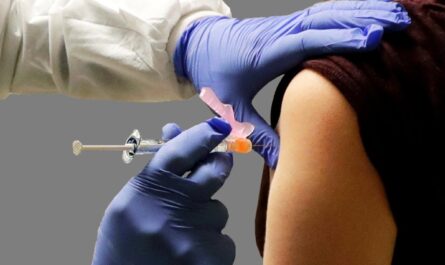Rise of single-use endoscopes
The global disposable endoscope market has witnessed tremendous growth over the past few years. Various factors such as concerns regarding infection control, rise in number of endoscopy procedures performed worldwide, and demand for cost-effective and efficient medical devices have contributed immensely to the rising adoption of single-use endoscopes. It offer distinct advantages over traditional reusable endoscopes such as reduced risk of cross-contamination and infection transmission. They eliminate the need for expensive and time-consuming cleaning, high-level disinfection, and sterilization procedures required between patients with reusable scopes. This helps in improving workflow efficiency and throughput in endoscopy suites.
North America dominated the global market in 2019, accounting for around two-fifths of the total market share. Rising prevalence of diseases requiring endoscopy, stringent regulations regarding reprocessing of medical devices, and presence of key players in the US and Canada are some of the major factors that have led to North America’s dominance in the disposable endoscope market.
Growing focus on infection control
One of the key drivers has been the rising focus on infection control and prevention of hospital-acquired infections. Rigorous reprocessing of reusable Global Disposable Endoscope is critical to eliminate any microorganisms that may remain on the device after usage and prevent transmission to subsequent patients. However, every step of manual cleaning, high-level disinfection, and drying of endoscopes carries a risk of improper handling that can potentially lead to infections. Single-use endoscopes obviate this risk completely as they are meant for single-time use on a single patient. They assure the highest level of sterility and safety for patients undergoing endoscopy procedures.
Several investigations worldwide have reported outbreaks of infections such as carbapenem-resistant Enterobacteriaceae resulting from inadequate reprocessing of duodenoscopes. This has increased scrutiny on endoscope reprocessing practices from regulatory agencies. For instance, the US Food and Drug Administration (FDA) and the US Centers for Disease Control and Prevention (CDC) have issued guidelines emphasizing the need for validated cleaning and disinfection methods for duodenoscopes. In this backdrop, disposable endoscopes are being increasingly preferred due to their inherent sterility and zero risk of cross-contamination between patients.
Growing endoscopy case volumes
Rise in prevalence of cancer, gastrointestinal, lung and other diseases globally has resulted in exponential growth in the annual number of endoscopy procedures performed worldwide in recent years. It is estimated that over 25 million gastrointestinal endoscopic procedures are performed annually in the United States. In Europe, over 30 million endoscopic procedures are done each year. Growing geriatric population, lifestyle changes, and diagnostic improvements have all contributed to increased incidence of various cancers and diseases requiring endoscopic evaluation. This has substantially spurred the demand for endoscopy as a fundamental diagnostic and therapeutic modality.
The constant rise in number of endoscopy cases performed each year has put tremendous pressure on endoscopy departments and workforce. Single-use endoscopes help improve case throughput and throughput by reducing reprocessing turnaround time between procedures. Their plug-and-play mechanism enables swift replacement after each procedure without the need for cleaning. This allows endoscopists to perform more procedures on a given day, thereby addressing both patient and hospital needs. The availability of cost-effective it has enabled better management of rising workload in endoscopy suites.
Emergence of advanced single-use endoscopes
The landscape of disposable endoscopes is changing remarkably with significant technological advances. Earlier, single-use models were rudimentary versions that lacked capabilities of high-end reusable endoscopes. However, recent introductions of innovative disposable endoscopes offer features and performance on par with conventional flexible endoscopes.
For instance, Ambu has launched a-ScopeTM, a sterile, single-use duodenoscope with remarkably thin and flexible insertion tube. It provides superior maneuverability, irrigation capabilities, and integrated rapid elevator mechanism. Ambu has also introduced other specialty disposable endoscopes such as cystoscopes and colonoscopes.
Boston Scientific Corporation has unveilied the LithoVueTM Single-Use Digital Flexible Ureteroscope which incorporates a miniature digital sensor at its distal tip for high-definition visualization. It delivers equivalent image quality as reusable digital ureteroscopes while eliminating reprocessing steps. Another player, OBP Medical has introduced NovoGIATM, a single-use flexible gastroscope and colonoscope with sophisticated ergonomic handles and control mechanisms.
Such advances are making single-use endoscopes more appealing to hospitals seeking cutting-edge technology along with economical and secure solutions. The increased availability of technologically-robust, specialty disposable scopes suitable for complex endoscopic procedures is expected to accelerate market growth in the coming years.
Cost-saving benefit
While initial capital costs are higher, studies have shown they help lower the total cost of ownership for healthcare facilities in the long run. Disposables do away with the need for high-capital investment in equipment for cleaning, disinfection, and sterilization of reusable endoscopes. They also eradicate costs associated with repairs, replacements, preventive maintenance, and technical support for standard endoscopes. Complicated reprocessing measures consume considerable resources in the form of water, chemicals, gases, labor hours, and machinery maintenance.
On the other hand, single-use endoscopes are very easy to use straight out of the package and do not require any reprocessing or sterilization steps post-procedure. This substantially reduces labor costs, resource utilization, and turnaround time between cases. Studies have estimated average savings of around $150–250 per procedure with single-use endoscopes compared to reusable models after factoring in overall costs. Growing awareness about long-term cost-benefit is propelling more hospitals and medical facilities to opt for it.
Future outlook
The global disposable endoscope is expected to witness steady growth in the upcoming years driven by benefits such as ease of use, assurance of sterility, improved workflow efficiency, and cost-savings over the long-run. Technological advancements would further expand applications of single-use endoscopes into more complex endoscopic therapies. As newer single-use models providing state-of-the-art features become available at competitive price-points, their adoption rate is likely to spike globally, especially in developed markets like North America and Western Europe which prioritize Patient safety.



